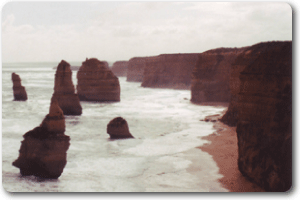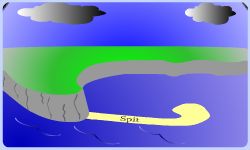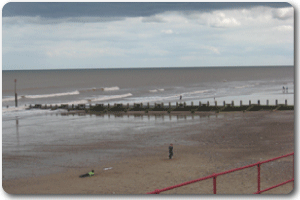
Waves
- Swash: the movement of a wave up onto the beach
- Backwash: the movement of a wave returning to the sea
- Constructive waves: build up beaches by depositing material
- They have a stronger swash than backwash.
- Destructive waves: erode the beach as they remove more material than they deposit.
- They have a stronger backwash then swash.
- Fetch: the distance across the ocean that the wind has been blowing on it.

Erosion
Waves erode the coastline through the processes of:
- Hydraulic Action: the force of the waves crashing against the cliffs & weakening faults & widening cracks.
- Abrasion: The sand & small material carried in the waves scraping against the rocks/cliffs & wearing them away.
- Attrition: Rocks & boulders in the water crash into each other and break into smaller pieces.
- Corrosion: The sea water dissolves soluble material in the coastline ( especially in limestone & chalk).

Longshore Drift
- Longshore drift is the movement of material along the coastline.
- It occurs due to the swash bringing material up the beach at an angle
- The backwash then drags the material backwards into the sea & the process repeats
Deposition
Spits are ridges of sand extending into the sea.
 |
Tombolos are spits that join up with an island located close to the coastline.
 |
Bars are ridges of sand that run parallel to the coastline, sealing off bays.
 |
Coastal Management
- Wooden groynes can be built along beaches to reduce the effects of longshore drift. They do not stop it but slow it down.
- Sea walls can be constructed at the back of beaches to absorb and deflect the waves energy, protecting cliffs or promenades.
- Beach nourishment is the practise of bringing in extra sand to top up beaches. It is expensive and will need repeating.
- Gabions are wire cages filled with rocks that serve a similar purpose to sea walls but are cheaper and can be removed easily.



